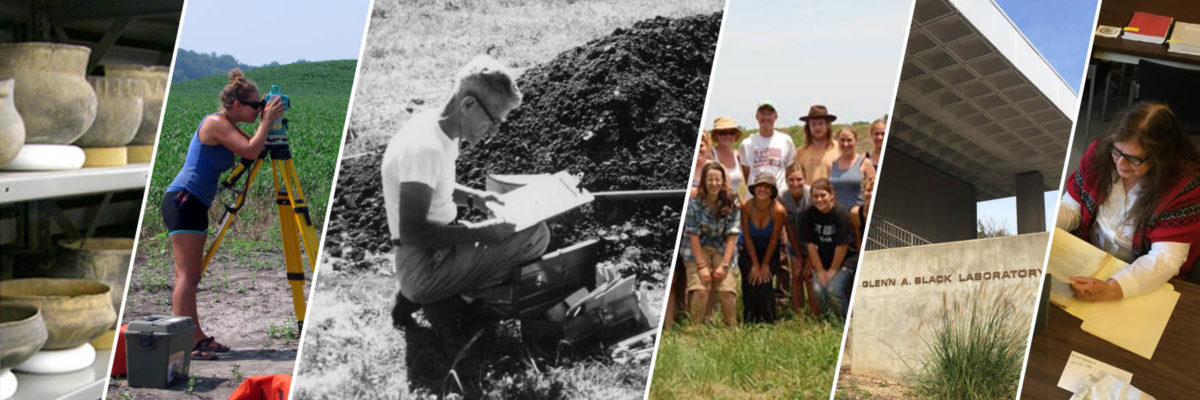by Amanda Pavot
Time for another Angel Update!
I’m still working on inventorying the boxes of the Type Collection. At first, I worked on a box of mostly projectile points, especially small triangular points. Then I worked on an especially heavy box of groundstone, which includes items like stones they used as hammers and celts (stone axes). Now I’m working on a box of worked bone, which includes bone tools and pins. One neat thing about working in a museum like this is the variety of interesting artifacts you get to see! Holding an object that was carved into by a person hundreds of years ago can really make you feel things.
There are a lot of other projects connected to this Angel Rehousing project. One of these is the very important job of repatriating artifacts and human remains. The Native American Graves Protection and Repatriation Act (NAGPRA) is a law that, among other things, sets the procedure of returning certain Native American artifacts to their related communities. It also reflects changes in thought, specifically how archaeologists in the early 20th century think in terms of family connections to communities of Native Americans. Excavations at Angel Mounds began in the early-to-mid 20th Century, so human remains and objects associated with burials ended up in the Glenn Black’s collection.
What we call the “NAGPRA Team” has already been working on sorting out the human remains and AFOs (Associated Funerary Objects, or objects buried with the deceased) to be repatriated. There is an original list of AFOs that is used to find the artifacts in the collection that were associated with burials. Each object is pulled from the bulk collection and carefully documented; they are measured, weighed, and identified and described in more detail than what was done previously. An object noted in the original logs as simply “animal bone” will now have more pertinent information listed in the database. The Angel Rehousing project will end up playing an important role in this as well.
While AFOs have already been pulled from the bulk collection, sometimes, despite our best efforts, objects can be missed. As we sort through each individual artifact to be rehoused, we can look them up in the database where it will say if it is an AFO or not. Any found AFOs can then be separated out to be repatriated. In other words, the rehousing gives us the chance to go through every artifact to ensure no AFOs are missed.
There’s also the rehousing of the faunal artifacts, aka all the animal bones. A lot of times animal remains were buried with humans, or animal carcasses were discarded near burials. While most of the human remains have already been separated from the rest of the artifacts, it can be very difficult to identify small bone fragments, and some human remains have been found mixed up with animal remains. As we rehouse faunal artifacts, we will be going through the bones to double-check that no human remains are left behind, ensuring that, if any are found, they can be treated with the respect they deserve and be repatriated.
I’ll end this post with exciting news; rehousing starts this week! Next time, I’ll be back with more specifics about that!
In September 2018, the GBL was awarded a Save America’s Treasures grant to rehabilitate and rehouse about 2.8 million artifacts from Angel Mounds over the next 3 years. These grants are administered by the National Park Service in partnership with the Institute of Museum and Library Services.
This “Curating Angel” project will allow us to provide safe, long-term preservation of the artifacts and associated documentation from archaeological work at Angel Mounds and make these collections more accessible for research and education.
More about IMLS
The Institute of Museum and Library Services is the primary source of federal support for the nation’s libraries and museums. We advance, support, and empower America’s museums, libraries, and related organizations through grantmaking, research, and policy development. Our vision is a nation where museums and libraries work together to transform the lives of individuals and communities. To learn more, visit www.imls.gov and follow us on Facebook and Twitter.

(The views, findings, conclusions or recommendations expressed in this blog post do not necessarily represent those of the Institute of Museum and Library Services.)

